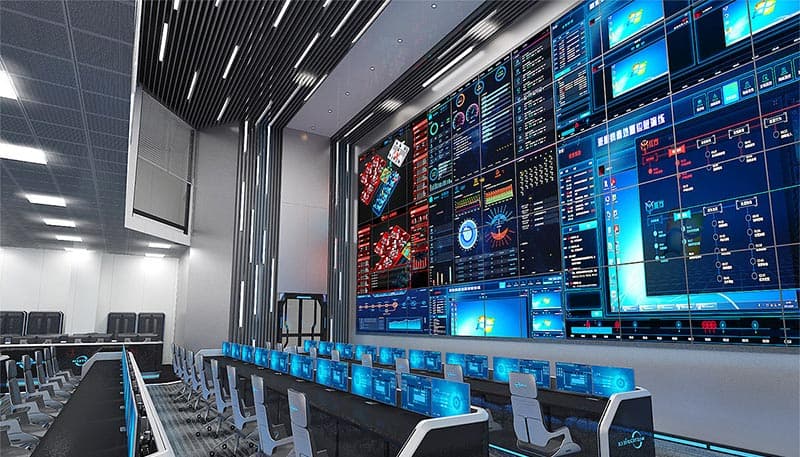Early control rooms mostly appeared in factories and were used for production control.

Early control rooms mostly appeared in factories and were used for production control.
At that time, the machines were all separated from each other, and various instruments, valves, and switches occupied all the space.
Not only did the operators have to run around the whole room, but with such a huge workload, many mistakes would occur.
Now all it takes is a small screen. But what helps operators is its powerful processing and computing power.
People can hand over more complex statistics to the machine, optimize the division of labor, and thereby improve work efficiency.
Let us learn more about the central control room and its systems through this iSEMC article.

What is the central control room?
- The central control room is a control room that controls factory equipment and production through the host computer and central control system.
It is the abbreviation of the central control room. The central control room of each unit is different and has different functions.
It can reflect the monitored activities in real-time, vividly and truly. The object not only greatly extends the observation distance of the human eye, but also expands the function of the human eye.
It can replace manual monitoring for long periods in harsh environments, allowing people to see everything that is happening at the monitored site, and Recorded via video recorder.
- The central control room is widely used in multimedia classrooms, multi-functional conference halls, command and control centers and smart homes.
For example, the traffic police central control room in the news is very common.
Or the dispatching duty room in the power industry, the internal mixing workshop in the rubber industry, various ratios The control formula, and carbon black feeding.
All need to be coordinated and controlled by the central control room. There is a display screen on a monitoring TV wall.
Many people sit at the computer to monitor both the computer screen and the large screen.
- Central control room operators can control projectors, display stands, DVD players, and video recorders.
And monitor command and dispatch through computers and central control system software.
Usually, the control room requires a very large video wall as a command and dispatch. iSEMC offers LCD video walls in different sizes for display at different distances, providing high reliability and the highest image quality for the control room.

Central control system definition
The central control system refers to the equipment that centrally controls various equipment such as sound, light, and electricity.
It is used in multimedia classrooms, multi-functional conference halls, command and control centers, and smart homes.
Users can use button control panels, computer monitors, touch screens, and wireless remote controls to control projectors and display stands through computers and central control system software.
What does a central control room operator mainly do?
The staff of the central control room are responsible for the data collection, processing, and monitoring of enterprises or institutions to achieve the purposes of control, optimization, scheduling, security, and management.
The operator in the central control room must monitor the picture on the large screen at any time to see if there are any abnormal situations.
When an abnormality occurs, he or she must use the dispatching system on the console for dispatch.
Operators can also perform monitoring and related operations on the screen on the console.

What functions do a central control room need to have?
As a control center, the central control room needs to have the following functions:
monitoring function, control function, data processing function, alarm function, communication function, security function, human-computer interaction function, and other functions.
- Monitoring function: It can monitor the operating status of various equipment and facilities in the system in real time, detect abnormal situations promptly, and take corresponding measures to deal with them.
- Control function: Able to remotely control various equipment and facilities in the system to achieve switching, adjustment, operation, and other operations.
- Data processing function: It can collect, process, store, and analyze various data in the system to provide data support for management decision-making.
- Alarm function: It can detect various problems in the system in time, classify, process, and record the problems, and also send alarm information to managers.
- Communication function: Able to communicate with various devices and systems to achieve information exchange and data transmission, ensuring the timeliness and accuracy of information.
- Security function: Able to carry out security management of the system, including fire prevention, anti-theft, lightning protection, and other measures to ensure the stable operation of the system and the security of data.
- Human-computer interaction function: It can provide a friendly interface and operation method, allowing operators to operate and manage conveniently, and improve work efficiency and accuracy.
Final thought
A central control room in a modern context is often a critical facility used to monitor and control complex systems, equipment, and processes.
These facilities can be found in a variety of fields and industries.
Overall, central control rooms play a vital role in various areas of modern society, and they combine advanced technology and real-time monitoring to ensure system reliability, efficiency, and safety.






